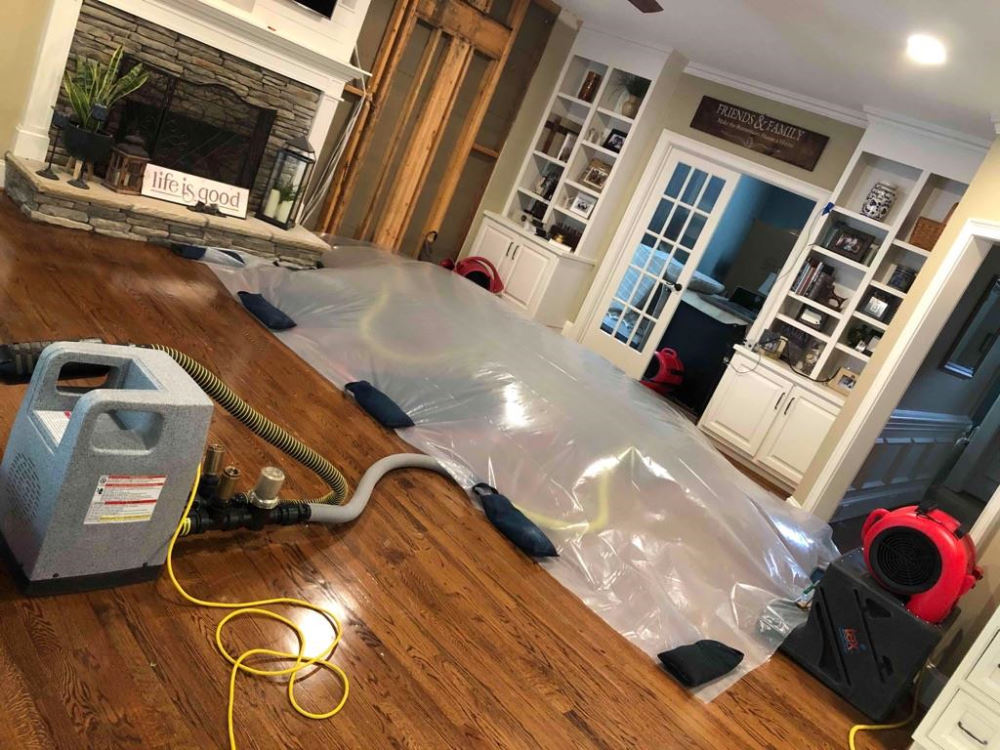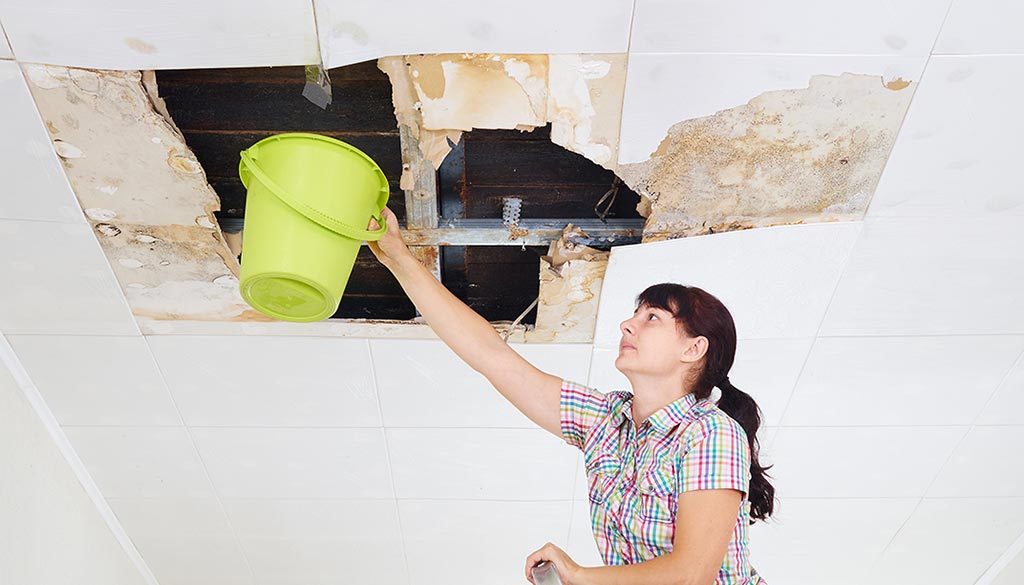7 Key Reasons You Should Never Delay Flood Damage Restoration
Crucial Actions to Follow for Effective Water Damage Remediation in Your Home
When confronted with water damages in your home, recognizing the crucial actions for efficient repair can make all the distinction. You need to examine the damage and warranty security prior to dealing with the problem. Stopping the resource of water is necessary, but it's simply the start. There's a collection of actions you need to take to protect your residential property from further problems as soon as you have actually handled that. Allow's explore what you must do following.
Assess the Damages
The very first action is to assess the damage completely when you find water damage in your home. Begin by recognizing the source of the water invasion. Check for leakages, ruptured pipelines, or other problems triggering the trouble. Next off, analyze the impacted locations for noticeable signs of damage, including staining, mold and mildew, or bending development. Don't forget to look in covert areas like behind wall surfaces or under floor covering, as water can permeate right into these locations unnoticed.Document the damages by taking clear pictures and notes. This will certainly help you when reviewing the situation with your insurance coverage provider or repair specialists. Focus on the sort of materials impacted, as different materials require different reconstruction techniques. Evaluate the extent of the damages. Is it small or considerable? Recognizing the range will guide you in deciding whether to manage it on your own or employ the professionals for a more considerable reconstruction procedure.

Guarantee Security
Prior to you start any remediation work, ensuring your security is necessary. Evaluate the problem of your home. If the water's deep or if you see electric threats, do not get in the location. Shut off the electrical power and gas supply to avoid mishaps. Put on protective gear like masks, boots, and handwear covers to protect yourself from impurities or mold.It's vital to remain mindful of your environments; look for slippery surfaces and sharp things. If the water is from a sewer back-up, treat it as dangerous waste. Keep youngsters and animals far from influenced areas to avoid exposure.Once you have actually taken these preventative measures, you can continue with the reconstruction procedure. Keep in mind, your safety comes first, and if you're ever before not sure, it's best to speak with a professional. Taking these actions will assist guarantee you're all set to deal with the restoration securely and efficiently.
Stop the Source of Water
After ensuring your safety and security, the following step is to quit the source of water. Recognize where the leak is coming from. It can be a ruptured pipe, a malfunctioning appliance, or even heavy rain entering with a damaged roof. Turn off the major water supply to your home to protect against more flooding if it's a plumbing concern. For devices, disconnect them and close off their supply of water valves.If the resource is outdoors, like rainwater, attempt to divert it far from your home using sandbags or various other barriers. For minor leakages, you may be able to use tape or a sealer briefly till an expert can repair it. Remember, resolving the resource rapidly is vital to reducing damages and preventing mold development. When you have actually quit the water, you'll remain in a better position to move on to the next action in the reconstruction process.

Remove Excess Water
Act quickly to eliminate excess water, as standing water can lead to a lot more extensive damages and mold and mildew development. First, gather your devices: a wet/dry vacuum cleaner, pails, and towels. If the water is superficial, you can make use of towels to take in the moisture. For much deeper water, a wet/dry vacuum is your best option. Make certain to clear the vacuum often to avoid overflow.If the water is polluted, like from a sewer backup, use safety gear, consisting of gloves and masks, to maintain on your own risk-free. Once you have actually gotten rid of as much water as feasible, look for surprise pockets of wetness in corners and under furniture, as these can nurture mold.Don' t neglect to switch off electrical devices and power outlets in wet areas to avoid risks. This initial action is crucial in reducing damage and setting the stage for a successful repair procedure.
Dry and Dehumidify the Location
Once you've eliminated the excess water, it's necessary to dry and dehumidify the area completely. Start by utilizing dehumidifiers efficiently to draw wetness out of the air and prevent mold growth. Maintain an eye on moisture levels to ensure the room dries totally.
Get Rid Of Standing Water
To successfully deal with water damages, you require to focus on removing standing water as quickly as feasible. Start by gathering essential devices, like a wet/dry vacuum or a pump, relying on the volume of water. A vacuum ought to do the trick if the water is superficial. For bigger quantities, a pump is a lot more reliable. While functioning, make certain to wear safety gear to maintain on your own safe from pollutants. As you remove the water, take notice of hidden locations like under furnishings or in corners where water could gather. Once you have actually eliminated the bulk, your area will start to dry out. This step is necessary, as remaining water can lead to mold and mildew growth and extra extensive damages.
Use Dehumidifiers Efficiently
Exactly how can you properly utilize dehumidifiers to dry and dehumidify your room? Begin by placing your dehumidifier in the most afflicted area, preferably where water damages is most serious. Make certain to close all doors and windows to develop a sealed environment. Activate the dehumidifier and set it to the appropriate moisture level, normally around 30-50%. Empty the water collection storage tank regularly, or consider utilizing a design with a constant drainage alternative for convenience. Preferably, utilize followers to improve air flow, aiding the dehumidifier job a lot more effectively. Maintain the dehumidifier running till you're positive that the area is completely dried out, avoiding mold development and added damages (Water Damage Cleanup). This step is important for effective water damage repair
Display Humidity Levels
Surveillance humidity degrees is essential during the drying procedure, as it helps guarantee your area remains without excess moisture. Spend in a reputable hygrometer to track humidity accurately. Preferably, you intend to maintain levels in between 30% and 50%. You might require to readjust your dehumidifiers or followers to boost air movement if moisture analyses climb over this array. Examine the analyses frequently, specifically in locations vulnerable to dampness, like bathrooms or basements. If you notice relentless high humidity, consider raising air flow or utilizing added dehumidifiers. Remaining on top of these degrees not just speeds up the drying procedure but additionally prevents mold growth, guaranteeing your home keeps risk-free and comfy.
Clean and Disinfect Affected Surfaces

Recover and Fix Your Home
After cleaning and decontaminating the influenced areas, it's time to restore and repair your home. Begin by assessing the damage. Inspect for structural issues, like damaged floorings or walls, and address any type of necessary repair services. Changing damaged drywall or floor covering is essential for both appearances and safety.If your furniture or valuables were affected, take into consideration whether they can be salvaged or require replacement. Clean or professionally recover products where possible.Next, repaint wall surfaces and touch up any areas that require focus. This not only enhances look but likewise secures surface areas from future water damage.Don' t fail to remember to check your plumbing and appliances for leaks, making certain whatever's working effectively. Consider setting up a dehumidifier to avoid future moisture issues. By taking these actions, you'll recover your home to its former glory and produce a safer living setting.
Regularly Asked Concerns
Exactly How Long Does Water Damages Restoration Generally Take?
Water damage reconstruction generally takes anywhere from a few days to numerous weeks, depending upon the level of the damages (Water Damage Cleanup). You'll wish to analyze the scenario swiftly to reduce more difficulties and assure proper restoration
Will My Insurance Coverage Cover Water Damage Remediation Expenses?
Your insurance may cover water damage remediation expenses, yet it depends upon your policy. Check your protection details and contact your insurance coverage representative to clarify what's included and what you need to submit an insurance claim.
Can I Handle Water Damage Remediation Myself?
You can deal with water damages repair on your own, but it's essential to examine the circumstance. If it's substantial, you could wish to call specialists. Always prioritize security and assure you've obtained the right devices.
What Are the Signs of Hidden Water Damages?
You may notice indications of concealed water damage like deformed wall surfaces, moldy smells, or staining. If your floorings really feel mushy or you area mold, it's time to examine further prior to the circumstance aggravates.
Just How Can I Stop Future Water Damages in My Home?
To avoid future water damages in your home, you must frequently examine plumbing, seal cracks, maintain seamless gutters, and assurance proper water drainage. Setting up a sump pump and wetness barriers can additionally aid keep your space completely dry. When you uncover water damage in your home, the first action is to analyze the damages thoroughly. Act rapidly to remove excess water, as standing water read more can lead to more comprehensive damages and mold and mildew growth. To efficiently deal with water damages, you require to concentrate on getting rid of standing water as quickly as possible. As you remove the water, pay attention to hidden locations like under furniture or in corners where water may gather. Water damage repair typically takes anywhere from a few days to several weeks, depending on the extent of the damage.